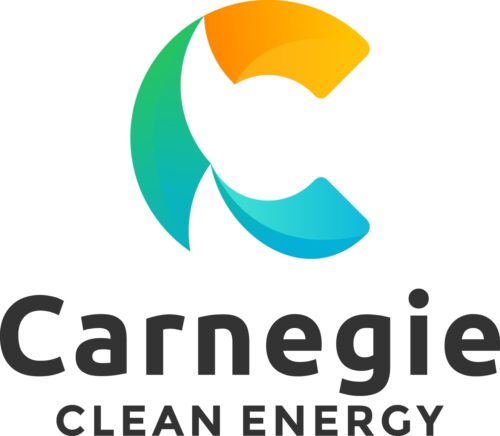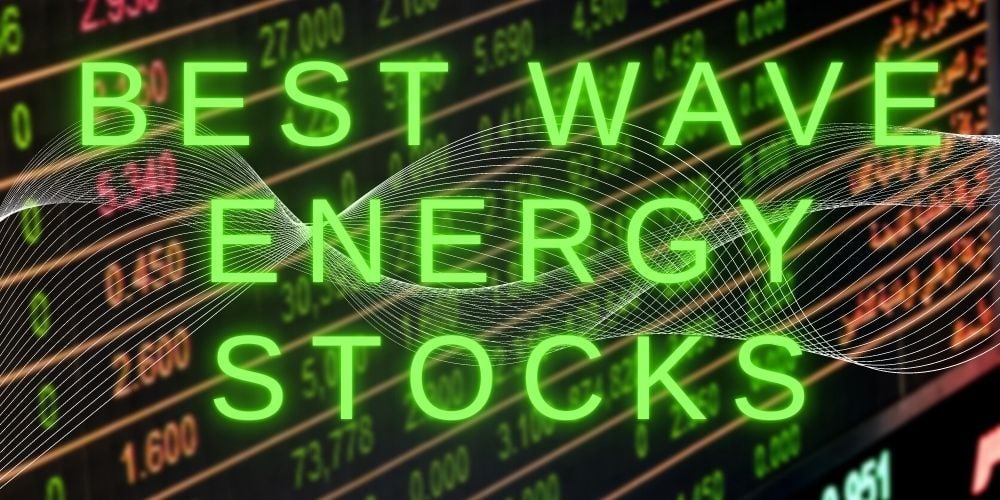If you are looking for portfolio picks that can deliver waves of success, you might have come to the right place.
Let’s look deeply at the best wave energy stocks the market offers and see if these can help you grow your portfolio. Because these wave energy stocks could help power up your wealth.
Best Wave Energy Stocks To Track
Ocean Power Technologies Inc (NYSEAMERICAN: OPTT)
OPTT is a leading American renewable energy company and a pioneer in ocean energy systems.
The company has developed several innovative technology platforms for harnessing wave energy and operating in tidal waters.
Ocean Power’s core wave-harnessing technology is the PowerBuoy system. The novel platform acts as an Uninterruptable Power Supply (UPS) by harvesting wave energy and recharging itself.
The platform floats above the point of use and can operate at any ocean depth above 20 meters.
As the PowerBuoy system moves up and down with the ocean’s waves, it generates energy with a piston that yields electricity.
The system is used in a range of ocean operations. Some of those operations include offshore oil and gas platforms, remote communities, and ocean data collection systems.
OPTT has been making significant progress in advancing its wave energy technology. Which has, among other things, helped it obtain contracts with the United States Navy.
The renewable wave energy company also offers a subsea battery product. An economical and reliable energy storage system that can power subsea payloads.
Ocean Power Technologies has yet to report fourth-quarter earnings for 2022. But the company did reasonably well in Q3.

Revenue was up 22% YoY in the third quarter, while net income rose more than 6%. The company’s net profit margin also grew to a whopping 24% during the same quarter.
The company also reported a jaw-dropping net cash increase of more than 116%. However, it still registered a net loss of nearly $5 million.
But despite the flop, it’s possible that the company could offer retail investors compelling returns in the near future as its proprietary technology has tremendous potential.
In fact, reports estimate that the waves off the coast of the United States could power as much as 64% of the country’s electricity generation—a giant prospect with a considerable economic impact.
A recent report by the World Economic Forum (WEF) even went as far as saying that “wave energy globally could meet the world’s annual electricity needs, if it was fully harnessed.”
If forecasts come to fruition, they could benefit the industry and help companies leading the sector, like OPTT.
From a technical perspective, shares of the company bottomed out near the $0.30 area. A price range in which the stock is quickly approaching again and a key level to watch.
If the stock can hold this bottom again, it’s still to be seen. But if it does, investors could see some upward momentum.
The ocean power technologies stock has a tiny market cap of only $30 million. A size that could offer both volatility and the possibility of compelling gains if the sector takes off.
Eco Wave Power Global AB publ ADR (NASDAQ: WAVE)
Eco Wave Power is another leading player in the wave energy sector and a developer of tidal energy systems.
The Swedish-based company is known for its innovative wave energy converter, which captures the energy from ocean waves and converts it into electricity.
The system uses floaters that move up and down with the waves to harness the energy of the waves. The movements then drive hydraulic pumps up and down, generating electricity.
Unlike OPTT’s system, these pumps are designed to work onshore or near shore rather than floating in the middle of the ocean.
This setup is much more cost-effective than its competitors. It also allows for easier maintenance of the floaters since they are always attached to a structure.
While for example, those floating in the middle or bottom of the ocean require specialized maintenance operations.
In such cases, personnel might need to mobilize away from the coast and employ the use of marine drones, divers, or mini-submarines.

Furthermore, the floaters operate through a Power Purchase Agreement (PPA). In other words, they are connected to the electric grid, allowing the company to sell electricity to the broader market.
Their systems are already operational in many locations globally, including Gibraltar, Israel, and Mexico.
Eco Wave Power has already registered several patents for its innovative technology. But it also has additional projects that could help its patent portfolio.
In recent news, the company announced a historic concession agreement to build a 77-megawatt power station in Ordu, Turkey—a first for the country, which will cost nearly $150 million.
The company declared strong earnings during the third quarter as net income reportedly rose by 87% YoY.
However, it still registered a net loss of nearly $580 thousand.
WAVE shares and the rest of the market fell on a downward spiral shortly after itsIPO in 2021.
Nonetheless, the stock price has decelerated and appears to be forming a bottom near the $3 area.
But despite its lack of profitability and price performance, WAVE could have brighter days ahead along with the industry.
Analysts project that the market could grow at a CAGR of 25%, offering the increased potential for WAVE to capitalize on.
Carnegie Clean Energy Ltd (OTCMKTS: CWGYF)
Carnegie is an Aussie renewable energy company specializing in wave energy technology.
The company’s primary wave energy product is CETO. The unique technology uses fully submerged point absorbers to capture energy from ocean waves.
The submerged buoy is placed a few meters below the ocean’s surface, where it harnesses the movement of the ocean’s waves.
Then its internal power take-off (PTO) system converts the movement into electricity.
Being fully submerged generates no visual impact, which might be appealing to some coastal cities that wish to maintain a natural ocean sight. It also offers improved storm survivability and minimal environmental impact.
The company’s technology has been successfully deployed in several countries, including Australia and the UK.
The company was also awarded a EuropeWave PCP country in Ireland with almost €20 million in funding.
The Irish project is expected to be the world’s largest commercial wave energy project. If so, it could generate up to 320MW from 100 buoys.
Despite advancements in its business, the company has faced some financial challenges in recent years. In 2018, the company entered voluntary administration due to financial difficulties.
Although fourth-quarter earnings were surprisingly high, that could indicate better days ahead.

Revenue and net income both increased 33% YoY during the fourth quarter. At the same time, the net profit margin came to 50% higher than at the same time during the previous year.
Like the other companies on this list, Carnegie Clean Energy Limited reported a net loss. Nonetheless, at $387 thousand, the loss is not as significant.
Shares of CWGYF have a very low float which tends to be a common characteristic of most OTC penny stocks.
Therefore, investors should exercise caution when executing buy and sell orders, mainly if the orders are for large quantities of shares.
Why? Well, low-float stocks tend to not have enough buy-and-sell order volume. This means that there aren’t enough shares available to trade.
Executing market orders with low float stocks could push your buy or sell price much higher or lower than intended.
It might be better to buy into these stocks slowly and use limited orders. However, they might be better suited to experienced traders due to their difficulty.
As far as price, shares of the company have been trading nearly flat since the summer of 2022.
The 200-day moving average is now getting close to the stock price, an occurrence that hasn’t happened since March 2020.
The encounter between the moving average and the share price could serve as a catalyst for strong movement in either direction.
Are Wave Energy Stocks a Good Investment?
Wave energy stocks could offer investors compelling growth opportunities as the need for green energy sources soars globally.
The novel technology has the potential to produce large amounts of electricity by harnessing kinetic and potential energy from waves. It does so while maintaining low carbon emissions.
This helps position the technology as a potential disruptor for the energy industry and a compelling alternative energy source.
Government incentives and ESG investment trends have fueled the demand for clean energy to support a sustainable future.
Both trends, coupled with huge demand from the energy market, could help wave energy stocks deliver a tsunami of returns for investors.
Globally, governments are endorsing policies that promote clean energy, including heavy investment, tax credits, and limiting the use of fossil fuels. These trends could help fuel its growth in the years ahead.
Most recently, the Biden administration announced a $25 million investment in the industry by the Department of Energy (DEO).
This was followed by an investment of $27 million made the year prior.
ESG investing is also taking center stage as one of the most prominent investment themes of the 2020s.
Last year Blackrock’s CEO, Larry Fink, addressed the fund’s commitment to ESG investing in a letter to investors.
The CEO of the largest asset manager in the world highlights a notable point in his letter. He says investors’ interest in companies that excel at ESG practices is growing.
In Fink’s words: “Few things will impact capital allocation decisions – and thereby the long-term value of your company – more than how effectively you navigate the global energy transition in the years ahead.”
But wave technology is still in its early development phase.
The global market was only valued at a mere half a billion in 2020. This is primarily because technology is still developing. But wave technology is still in its early development phase.
While growth projections are varied, most analysts agree on a 9% to 25% CAGR rate from now until 2030.
But expectations could quickly change for the better. The renewable energy market cap is estimated to grow to nearly $2 trillion by 2030.
This gives technology and investors the possibility of expansive growth in the future if it can capture a larger market segment.
But investors might need to be willing to stomach the risks of investing in a novel industry.
Now that you know more about wave energy stocks, you might want to add one (or more) of them to your portfolio.
Contribution of Wave Energy as an Energy Source
At this time, wave energy is the best bet we have for pulling energy out of our roaring seas and oceans. That said, we still have a long way to go in truly harnessing its incredible power.
Over 70% of our planet is covered in ocean, allowing for nearly 400,000 miles of coastline. Roughly 2% of that exceeds a wave power density of 30 kilowatts per hour.
From just that small stretch of land, it’s possible to generate some 4,500 terawatts of power from the ocean’s movement alone. That amount of energy is enough to meet nearly 17% of the world’s demand.
Countries with long coastlines like the U.S., Canada, or the U.K. stand to benefit more.
If there’s a way to make use of the 98% of coastline without significant wave production, oceans alone could power all our planet’s needs. Those numbers don’t even include opportunities with salinity or temperature gradients, allowing for even more access to untapped power.
Wave Energy Stocks FAQs
What is Wave or Ocean Energy?
Wave (or Ocean) energy harnesses water to create power through both chemical and physical means. At present, this happens one of four ways:
Tides and Currents
As tides rise and fall, it’s possible to create energy through the construction of dams across an estuary. Similarly, modular systems can capture kinetic energy from incoming tidal currents.
Waves
The up and down churning of waves in seas and oceans is another source of this type of energy. Engineers can contain that energy through modular means.
Temperature Gradients
Our large bodies of water are constantly fluctuating in temperature as waters move. The resulting thermal energy can be harnessed using various process without affecting the ecosystem.
Salinity Gradients
Salinity gradients occur when freshwater streams and rivers flow into salty bodies of water. Energy associated with this gradient can be collected through unique processes involving pressurized reverse osmosis.
Is Wave Energy a Good Investment?
Wave energy could have the potential to be a great investment. However, investors might need to stomach the risks that come with emerging technologies. According to the World Economic Forum, wave energy could meet the world’s annual electricity needs if fully harnessed. Thus, delivering major gains for investors.
Does Wave Energy Have a Future?
In theory, wave energy does have a bright future ahead. However, the technology is still in its development phase which means that there are a lot of uncertainties around it. For example, there are challenges related to costs and the potential harm to marine life.
What is the Major Disadvantage of Wave Energy?
Wave energy does have some major disadvantages. For one thing, operating equipment in a high-wave activity ocean area can be both difficult and dangerous. These risks mean costs are higher to harness energy from waves and could also pose a risk to marine and human life.
Why Are We Not Investing in Tidal Energy?
Tidal energy offers promising results but the technology is still novel and offers limited suitable locations for its operation. There is some investment from governments both at home and abroad, but it’s still not as significant.
The Biden administration has invested over $50 million in wave energy since 2021.


 Tags:
Tags:










